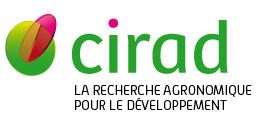Evaluation of an alternative spectroscopic approach for aflatoxin analysis: Comparative analysis of food and feed samples with UPLCâMS/MS
Campbell K., Ferreira Cavalcante A.L., Galvin-King P., Oplatowska-Stachowiak M., Brabet C., Metayer I., Montet D., Haughey S.A., Elliott C.T.. 2017. Sensors and Actuators B. Chemical, 239 : p. 1087-1097.
Increasing research has highlighted the effects of changing climates on the occurrence and prevalence of toxigenic Aspergillus species producing aflatoxins. There is concern of the toxicological effects to human health and animal productivity following acute and chronic exposure that may affect the future ability to provide safe and sufficient food globally. Considerable research has focused on the detection of these toxins, based on the physicochemical and biochemical properties of the aflatoxin compounds, in agricultural products for human and animal consumption. As improvements in food security continue more regulations for acceptable levels of aflatoxins have arisen globally; the most stringent in Europe. These regulations are important for developing countries as aflatoxin occurrence is high significantly effecting international trade and the economy. In developed countries analytical approaches have become highly sophisticated, capable of attaining results with high precision and accuracy, suitable for regulatory laboratories. Regrettably, many countries that are affected by aflatoxin contamination do not have resources for high tech HPLC and MS instrumentation and require more affordable, yet robust equally accurate alternatives that may be used by producers, processors and traders in emerging economies. It is especially important that those companies wishing to exploit the opportunities offered by lucrative but highly regulated markets in the developed world, have access to analytical methods that will ensure that their exports meet their customers quality and safety requirements. This work evaluates the ToxiMet system as an alternative approach to UPLCâMS/MS for the detection and determination of aflatoxins relative to current European regulatory standards. Four commodities: rice grain, maize cracked and flour, peanut paste and dried distillers grains were analysed for natural aflatoxin contamination. For B1 and total aflatoxins determination the qualitativ
Mots-clÃĐs : aflatoxine; produit alimentaire; aliment pour animaux; technique analytique; identification; spectroscopie; maÃŊs; riz; arachide; farine de maÃŊs; drÊche de brasserie; contamination biologique; rÃĐglementation; pays de l'union europÃĐenne
Documents associÃĐs
Article (a-revue à facteur d'impact)
Agents Cirad, auteurs de cette publication :
- Brabet Catherine — Persyst / UMR QUALISUD
- Piro-Metayer Isabelle — Persyst / UMR QUALISUD
